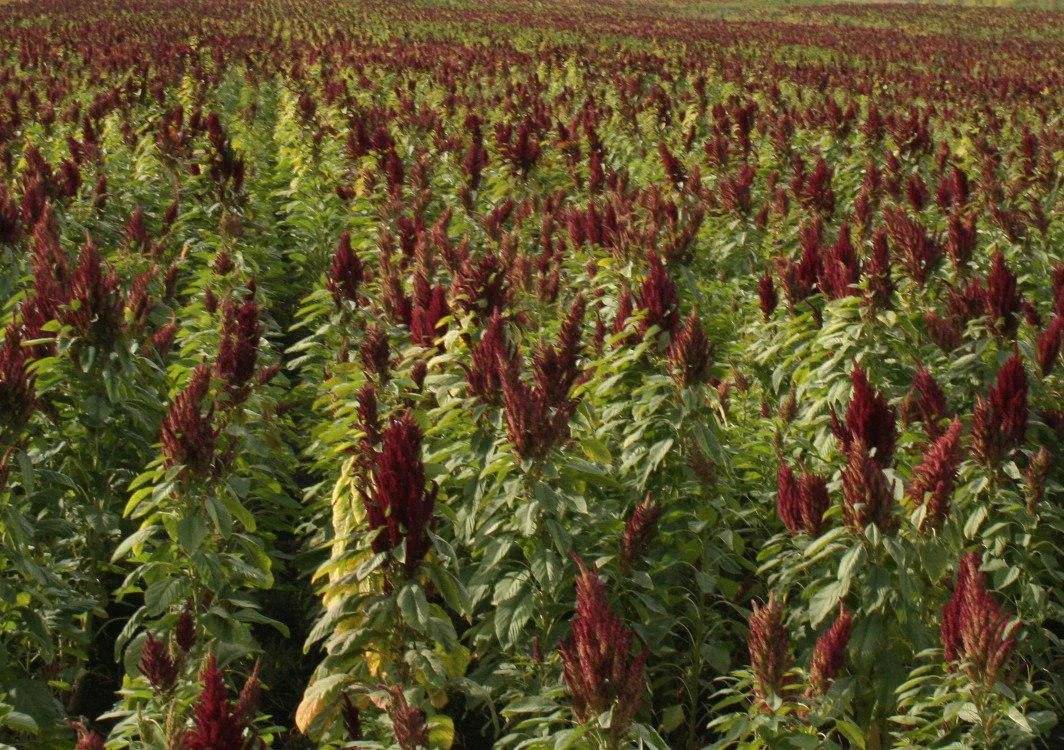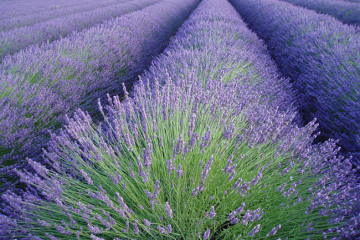Amaranth plant
Content:
In the Amaranth family there are many beautiful ornamental, grain and forage plant species. Amaranth is an unpretentious flower used for a variety of purposes. It can be found both in the field and in a vacant lot, a flower bed. Growing this plant is a pleasure as no additional knowledge is required. Below is a detailed description of amaranth, what kind of plant it is, when to plant it and how to care for it.
What is amaranth
Amaranth is not a fruit, but a cereal plant, also known as velvet, cockscomb, and squid. It is sometimes referred to as a cat's or fox's tail. It can be annual or perennial. It grows mainly in temperate climates, is used to decorate flower beds, produce flour, as animal feed, in the creation of medicines and cosmetics. To do this, take all parts of the plant, even the roots. Moreover, all amaranths are plants from the Amaranth family, which are very different. Among the many varieties and species, weeds are also found (amaranth bluish, thrown back).
Origin and appearance
The homeland of the flower is the South American continent. The plant was successfully cultivated by the Maya Indians even before the arrival of the Europeans. Together with other cultures, it was exported to Europe, ended up in North America and Asia, and spread throughout the world. Now they are sowing fields in China and India.
In Russia, there are about 20 species of amaranth. It was not easy to cultivate the plant as a fodder or cereal crop in the past, since during the process of pollination, many species lost their beneficial properties and turned into weeds. Now this problem has been solved, amaranth (cereal) is in demand, and porridge is made from it.
The flower looks like a grass with straight, sometimes branched stems and green, less often red leaves. The base of the leaf is pulled into the root, the leaf itself is alternate, sometimes rhomboid, lanceolate or ovoid. Its apex is slightly pointed and has a small notch.
The flowers are axillary, their arrangement is bundle-shaped, group, their tops are paniculate and spike-shaped. The plant can be monoecious or multihomed. The shade of amaranth flowers is red, sometimes maroon.
Application and useful properties of amaranth
The ancient Mayans, Incas and Aztecs cultivated amaranth for the purpose of obtaining flour, from which delicious bread was baked. The peoples of Asia to this day use the plant as a grain and vegetable crop. It finds application in:
- cooking (the leaves of some varieties taste like spinach, they are added to salads and hot dishes, dry leaves are used as a seasoning when preparing meat dishes);
- agriculture (used for grain, silage, livestock consumes fresh amaranth grass);
- landscape design (for decorative purposes, paniculate, tailed and sad varieties are grown);
- cosmetology (part of anti-aging and skin regeneration creams, face and hair masks, body lotions);
- folk medicine (biologically active substances such as rutin and carotenoids are isolated from the stems and leaves).
The plant has the following properties:
- regeneration (restores skin cells damaged as a result of burns, insect bites and allergies);
- removes toxins and toxins (cleanses the body, promotes weight loss, improves the digestive tract);
- is an additional source of folic acid;
- taking grains has a positive effect on the work of the kidneys and adrenal glands;
- normalizes blood pressure;
- lowers cholesterol levels;
- used in rinsing decoctions helps to strengthen the gums;
- stimulates the brain, since its leaves and seeds contain a large amount of zinc and vitamin B;
- improvement of the central nervous system.
The benefits of amaranth leaves are as follows, they:
- improve the functioning of the genitourinary system;
- strengthen the immune system;
- contribute to the normalization of hormonal levels (especially useful for newly-born women and adolescent girls);
- act as an anti-inflammatory and analgesic if used in infusions and decoctions;
- stimulate the production of large amounts of insulin;
- strengthen the respiratory and cardiovascular systems;
- normalize body temperature.
Types and varieties of amaranth
Breeders know over 100 species of amaranth, mainly preferring to grow in warm or temperate climatic zones. But only a few of them are intended for decorating flower beds and lawns; a few can be seen in an ordinary garden in the country.
Amaranth tailed
An annual with edible leaves and seeds, bright burgundy flowers. It is mainly cultivated as a grain crop, but its flowers and leaves are so beautiful that in Central Russia, tailed amaranths are often planted as an ornamental plant. This is also due to the fact that the amaranth flower needs more time and other climatic conditions to ripen.
In countries with a warmer climate (India, South America), the plant has time to ripen to the desired species for consumption, in Russia it dies due to early frosts. Leaves and seeds are rich in protein, which is why vegetarians love this type of amaranth. In addition, it is useful for people with disorders in the digestive system.
Amaranth thrown back
An annual weed belonging to the genus Amaranth family. It grows on wastelands and for a long time not cultivated agricultural land, loves soils rich in humus, saturated with a large amount of nitrogen. It is not easy to get rid of thrown back amaranth. This erect plant with green leaves and flowers can grow up to 1 m in height and produce up to 5 thousand seeds in one season. You need to fight it before dropping the seeds, which means back in May-June, since fruiting begins in July and lasts until September.
Amaranth tricolor
An ornamental plant with colorful leaves. The color depends on the variety. There are tricolor amaranths, whose leaves are painted in creamy yellow, orange, scarlet, maroon, light and dark green shades, mixing with each other, which was the reason for choosing the name of the plant.
Amaranth tricolor is a pyramidal plant with a height of 0.4 to 1.2 m. Its homeland is Asia. The most popular varieties are:
- Illuminations;
- Aurora;
- Earley Splender;
- irreproachable.
Amaranth red
The annual plant amaranth red can be grown both outdoors and in a pot. It reaches a height of 1.5 m, is distinguished by a rich red shade of leaves and a slightly faded color tops of flowers. Inflorescences are small, the decorative role is assigned mainly to the leaves.
Growing amaranth from seeds: when to plant in open ground
Weeds grow everywhere, but to grow ornamental amaranth, you need to choose a suitable planting site, soil, and irrigation system. In addition, you need to spray with insecticides if pests or signs of disease appear on the plant.
What is needed for landing
Any species, including white amaranth, grows best in soil with a neutral environment, but some of its varieties take root on acidic soils. It is best if the soil is sandy, loamy, well-drained. Soil types that are high in phosphorus and nitrogen are encouraged.
Propagated by seeds. They are sown after the threat of spring frosts on the soil has passed. The flower does not need special care after planting.
Choosing the best place
Amaranth seeds are planted in well-lit open areas. The plant does not like shade, in extreme cases, partial shade is suitable for it, but it is best if direct sunlight will illuminate it most of the day. Amaranth does not tolerate the proximity of groundwater, therefore, the site intended for planting must be well drained. If the summer is rainy, amaranth loses most of its decorative properties, its roots can rot, and the plant itself may stop growing.
Step-by-step planting process
Before planting, the soil is loosened, weeds are removed, if necessary, they are dug up and watered, after that:
- With the help of a hoe, furrows are made up to 10-15 cm wide.
- Seeds are sown into the furrows, trying to maintain a distance of at least 1-2 cm between individual seeds (the distance between rows is 20-25 cm).
- Sprinkle the seeds with earth.
- The landing site is indicated by twigs stuck along the perimeter of the furrows.
If necessary, the plants are thinned out. This is done after the appearance of 2-3 leaves on each stem. Those of the seedlings that turned out to be superfluous in the row should not be thrown away, they can be carefully removed along with the roots (the earth will have to be watered abundantly for this) and transplanted somewhere else.
It is not required to specially grow seedlings, amaranth germinates very quickly from seeds in the open field, so there is no need to worry about transplanting young seedlings from boxes into the ground.
Amaranth care
Amaranth is not a capricious flower at all. They are almost not interested in pests, occasionally, mainly due to excessively high humidity, plants are affected by root rot, but this problem can be quickly dealt with by limiting watering. When growing a large number of amaranths, there is a risk of spreading fungal diseases and leaf spot among them. In this case, insecticides are connected to the struggle for the harvest and the preservation of the decorative properties of plants, the flowers are sprayed, the affected parts of the plants are removed.
Watering mode
Watering should be moderate. With regard to amaranth, the rule works according to which it is better not to top up than to pour.Plants are resistant to drought and temperature changes, so you should not water too often, just 1 watering per week is enough. Watered with settled warm water from the tap or rainwater.
Top dressing
Fertilize not often, 1-2 times over the entire period, starting from the emergence of seedlings and until the beginning of seed formation. Moreover, if amaranth is grown for food purposes (flour, fodder for livestock, leaves for salad), then it is prohibited to feed the plants with inorganic fertilizers. They accumulate in leaves and stems and make them unusable.
Amaranth is a herb that has been cultivated since ancient times for the purpose of obtaining valuable nutritive raw materials. More than 100 wild and cultivated species include weeds, fodder and grain crops. The plant is used in medicine, cooking, cosmetology, it is used to decorate flower beds and garden plots. It requires almost no additional care after planting, germinates well from seeds, tolerates drought well, and is easy to grow even for those who are new to gardening and floriculture.
















